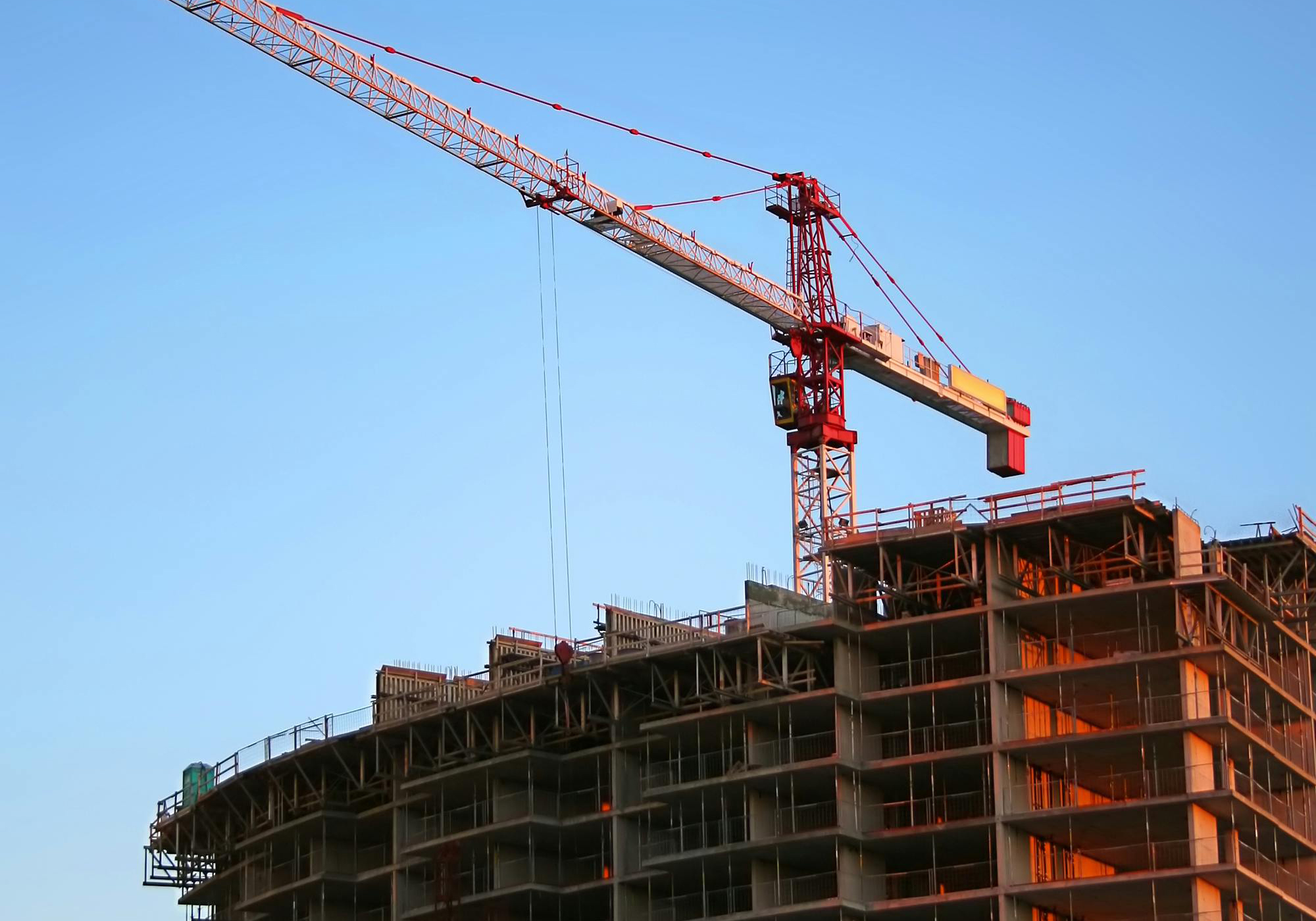

Blog
A comparison of the targeted performance (TEDI) vs. certified (HERS) compliance pathways for largescale multifamily new construction in a Massachusetts Stretch Code community

Many multifamily developers in Massachusetts Stretch Code communities are struggling with this question: What pathway should I use for energy code compliance?
When building a multifamily apartment building larger than 3 stories, the commercial code gets triggered. This allows you three pathways to meet the Massachusetts Stretch Code: HERS with ENERGY STAR Multifamily New Construction (Certified Performance Pathway), Targeted Performance Pathway (TEDI), or Passive House (Certified Performance Pathway).
SWA completed a study for a multifamily development looking for the simplest way to meet the energy code. Both HERS modeling and TEDI modeling were completed during early stage design development as feasibilities, and direct comparisons were made between the pathways for each modeling component.
Stay tuned for future analysis of the Passive House pathway!
Contact SWA to talk with a sustainability consultant and get started.
TEDI refers to the total amount of thermal energy a building requires for space heating, expressed on a per-unit-area basis (typically in kBtu/ft2/yr or kWh/m2/yr). It reflects the amount of energy output from all heating systems in the building that are used to maintain comfortable indoor temperatures.
The primary factors that affect TEDI are building design and massing, envelope assembly performance (including thermal bridging effects), ventilation, energy recovery, internal loads, and local climate. It should be noted that cooling demand can also be used to define an alternate TEDI metric to evaluate space cooling performance of the building.
The lower the TEDI, the less energy is needed to heat the building—signaling better performance. By focusing on TEDI, design teams can look to optimize passive solutions such as envelope performance, mitigating thermal bridging, improving air tightness, and optimizing ventilation systems.
For more information, read our blog post Understanding TEDI and Its Role in Building Energy Codes.
HERS modeling is a standard developed by RESNET (Residential Energy Services Network), a not-for-profit founded in 1995 by the National Association of State Energy Officials. HERS has been widely adopted in the United States, as the modeling software has been a pathway through the IECC using the ERI (Energy Rating Index) pathway for a long time.
HERS modeling is on a dwelling unit basis. As such, all unique unit types are modeled in a multifamily building, then the “worst case” is chosen as the representative dwelling unit for the entire project.
The “worst case” is determined by the dwelling unit with the highest HERS score, which corresponds with the highest energy use intensity. All subsequent modeling and submission for code compliance is then completed solely based on this worst-case unit. Common areas are not included in this type of modeling.
Energy modeling inputs for HERS modeling include building envelope, heating and cooling systems, ventilation, domestic hot water, lighting, appliances, infiltration, and local climate. As with TEDI modeling, a lower HERS score signifies a more energy efficient dwelling unit.
The project SWA modeled for HERS and TEDI modeling software was a 7-story building built around a 7-story garage. The building contains 300 studios, 1-bedroom and 2-bedroom units with 20,000 SF amenity space on the ground floor for a total GSF of 370,000 SF.
The first two floors were to be steel frame constructions and the floors above wood frame construction. The project is all-electric. Modeling was completed during schematic design to help inform decisions surrounding the envelope as well as mechanical and plumbing equipment.
Below is a chart outlining key takeaways for each modeled component in either the TEDI or the HERS pathway. Within the HERS pathway, the energy efficiency measures of the worst-case dwelling unit are listed. Please note that these are not prescriptive requirements, but a list of modeling inputs that allowed this project with the input geometry of the worst-case dwelling unit to meet the HERS 45 required by the Massachusetts Stretch Code.
| Targeted Performance (TEDI) Pathway | HERS (Certified) Pathway | |
|---|---|---|
| Stretch Code Requirement | To meet a heating TEDI of 2.8 and a cooling TEDI of 22.0 | To meet “HERS 45” / feasibility scenario |
| Envelope Backstop Requirement | Low glazed building* (applies to this case study): Maximum allowable area weighted U-value of all vertical assemblies is U-0.1285. | No window to wall ratio prescriptive requirement or envelope backstop requirement. |
| Above Grade Wall | De-rate performance due to thermal bridging per stretch code requirements. Case study performance required for compliance: U-0.075 (incl. TB derating) | Wood studs: R-21 + R5.25 ci = U-0.0435 (App A) Steel studs: R-24 + R16.8 ci = U-0.0385 (App A) No de-rating cladding attachment system. No thermal bridge modeling. |
| Windows | No performance requirement except backstop. Case study performance required for compliance: U-0.28, SHGC 0.38 | U-0.20, SHGC 0.25 |
| Balcony and Sliding Doors | No performance requirement except backstop.* | U-0.22, SHGC 0.27 |
| Curtainwall/ Storefront | U-0.25 maximum | N/A – only in-unit spaces modeled |
| Roof | R-30 (minimum code requirement) Note: not included in envelope backstop calculation | R-13 spray foam in roof truss, +R-40 ci (polyiso) |
| Envelope De-rating | Envelope performance must be de-rated due to clear-field, linear, and point thermal bridges, including: – Studs – Fasteners – Brick ties – Balcony – external wall – Internal floor – external wall – Internal Wall – external wall – Fenestration – external wall – External wall – roof – Brick shelves – External wall – grade – External wall – plane transition | Not required |
| Infiltration | Max. 0.35 CFM/sf of exterior envelope area (@75 Pa) | Max. 0.30 CFM/sf of enclosure (@50 Pa) based on ENERGY STAR® Multifamily New Construction requirement |
| Heating and Cooling | System type: Modeled systems are prescribed by modeling guidelines and do not reflect design. Efficiencies: Meet minimum requirements of MA code (does not impact TEDI). | 1+ bedrooms: ASHP (ducted) Heating: 9.25 HSPF2 Cooling: 17.25 SEER2 Studios: ASHP (ductless) Heating: 9.7 HSPF2 Cooling: 20.50 SEER2 |
| Ventilation | ERVs: 79% SRE (case study performance required for compliance) Modeled ventilation rates are prescribed by modeling guidelines and do not reflect design. – Residential (units): 0.096 CFM/sf – Residential support: 0.080 CFM/sf – Design should aim to not exceed these allowances or exceed ASHRAE 62.1/62.2 by >135% Fan Powers: Meet minimum MA Code requirements (minimal impact on TEDI). | 0-1 BR: 45 CFM, 27 Watts (0.60 W/CFM) 82% ASRE 2 BR: 60 CFM, 37 Watts (0.62 W/CFM) 81% ASRE e.g. RenewAire LF75H Lower flow rates can be used if only the bathroom is exhausted through the ERV and the kitchen is intermittently exhausted directly to outdoors. |
| Equipment | Meet minimum MA Code requirements. Modeled values (e.g. 1.74 W/sf for residential spaces) are prescribed by modeling guidelines and do not reflect design. | 1+ bedrooms: – Refrigerator: 650 kWh/yr. – Dishwasher: 240 kWh/yr – Clothes Washer: 123 kWh/yr – Clothes Dryer: HP dryer: 5.2 CEF – Lighting: 100% LED Studios: – Refrigerator: 450 kWh/yr. – Dishwasher: 240 kWh/yr – Clothes Washer: 123 kWh/yr – Clothes Dryer: HP dryer: 5.2 CEF – Lighting: 100% LED |
| Laundry | Meet minimum MA Code requirements. Modeled values are prescribed by modeling guidelines and do not reflect design. | Clothes Washer: ENERGY STAR Standard Clothes Dryer: Heat Pump Dryer |
| Lighting | Meet minimum MA Code requirements. Modeled values (e.g. 0.41 W/sf for residential spaces) are prescribed by modeling guidelines and do not reflect design. | 100% LED |
| Domestic Hot Water (DHW) | Meet minimum MA Code requirements. DHW systems are not modeled per modeling guidelines. | One electric resistance per apartment. 1-bathroom units: 50-gal storage, UEF of 0.93. No recirc. R-3 Pipe insulation 2+ bathroom units: 50-gal storage, UEF of 0.93. No recirc. R-3 Pipe insulation |
| Water Fixtures / Flow Rates | Meet minimum MA Code requirements. DHW systems are not modeled per modeling guidelines. | Showers / Lav faucet: < 2.0 GPM |
| Renewable Energy | Meet minimum MA Code requirements. | Cannot be counted towards HERS 45. |
*A building is “low glazed” when the glazed wall system area is not greater than 50% of the above-grade wall area. Here “glazed wall system” refers to curtain wall (vision and spandrel panel). The envelope backstop requirement for a “high glazed” building is U-0.1600.
Each available pathway presented different and unique challenges. The project team wanted to find a code compliance pathway using unitized electric resistance hot water heaters. This became a significant challenge in the HERS pathway as the electric resistance DHW is a large energy penalty in the HERS modeling software.
Meanwhile, DHW equipment does not affect the TEDI model, as it is not a model input. Similarly, TEDI modeling is all about meeting the thermal energy demand intensity for a project, therefore does not take the heating and cooling efficiencies of HVAC systems into account.
Thermal bridging had the opposite effect. Thermal bridging is modeled in the TEDI pathway and certain envelope backstop requirements must be met for compliance. This considers cladding attachments systems as well as continuous insulation attachment systems. These requirements are comparable to Passive House thermal bridge requirements and are very stringent. This modeling is simplified in HERS software to the point that cladding must not be included, and thermal bridging isn’t modeled.
Through the analysis of modeling the same project to show compliance through the TEDI pathway and through the HERS pathway, the results showed that choosing the most relevant pathway for a project can be very dependent on project’s preliminary design as well as goals.
If a project has very many complicated thermal bridge conditions, the HERS pathway may be the simplest way through the Stretch Code. Using the HERS pathway also allows you to focus more of the energy on the dwelling unit spaces rather than the whole building.
For multifamily projects over 3 stories, ESMFNC must also be met, which puts some prescriptive requirements to the common areas. These prescriptive requirements are still much less stringent and involved in terms of modeling compared to the TEDI pathway.
The TEDI pathway can be a great alternative for an all-electric project which does not want to use heat pump water heater technology.
Electric resistance DHW systems are reflected so poorly within the HERS software that it is nearly impossible to get the worst-case dwelling unit to meet HERS 45. Therefore, the TEDI pathway can be a good alternative for projects which are installing electric resistance DHW.
Same goes for heating and cooling equipment. If the project design is constrained to using lower efficiency equipment, TEDI can be a great pathway as the as-designed efficiencies are not used in the energy model.
Every project and portfolio is unique. We regularly help project teams determine the most cost-effective pathway to code compliance, not just today, but for the long term, while achieving their goals. Contact SWA to get started.
Author: Shari Rauls, Sustainability Consultant
Steven Winter Associates